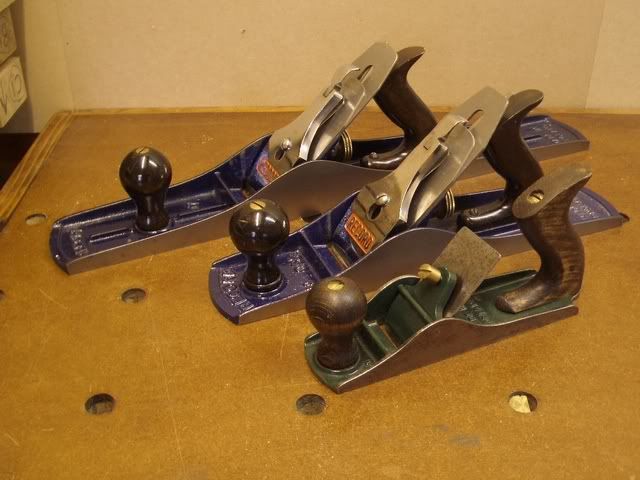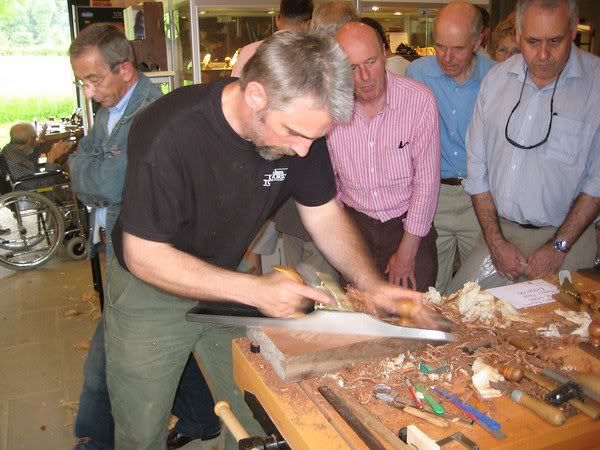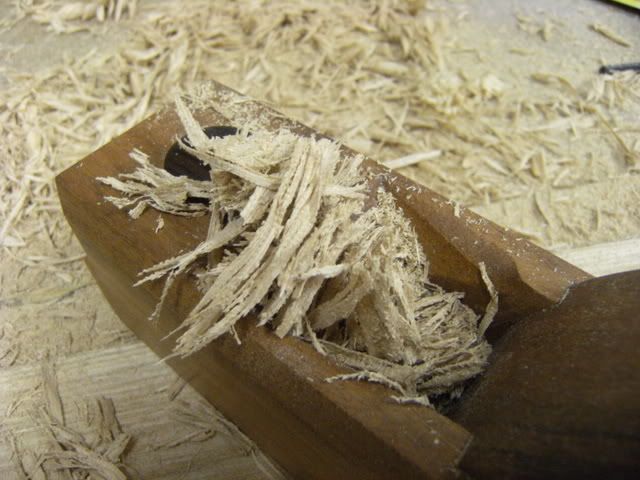Paul Chapman
Established Member
At the West Dean Hand Tool Event, I was impressed by the demonstraton by Deneb of the Lie Nielsen Toolworks of the use of a toothed blade when preparing rough, sawn stock to size. Deneb was using a toothed blade in a Lie Nielsen bevel up plane and it did not seem as though any such blades were available for bevel-down planes - disappointing because all my planes are bevel down 
However, by chance I found that bevel-down toothed blades are available \ / They are made by Kunz and can be ordered through Dick in Germany http://www.dick.biz/
/ They are made by Kunz and can be ordered through Dick in Germany http://www.dick.biz/
I ordered one on Saturday and it arrived yesterday. Here it is

It seems quite nicely made. One slight problem with bevel down toothed blades is that shavings can get trapped between the blade and the cap iron but I found that this can be easily overcome by setting the cap iron a long way back from the edge (you might need to move the frog back a bit in order to be able to withdraw the blade sufficiently when adjusting the blade). I found it works OK like this
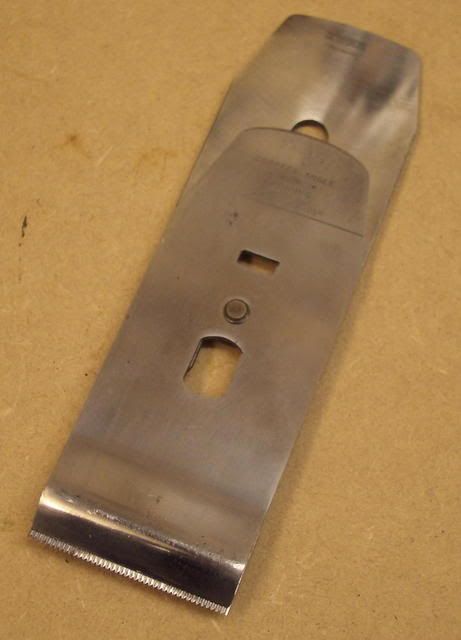
When doing rough work like this the cap iron serves no purpose other than to enable the blade to be adjusted, so the planing will not suffer.
I bought the blade to use primarily in my old Record #07 which I use for a lot of stock preparation - usually with a heavily cambered blade. It fits nicely in the plane

I tried the blade on a piece of rough oak which was very subject to tear-out. I found the blade works best used at 45 degrees across the grain
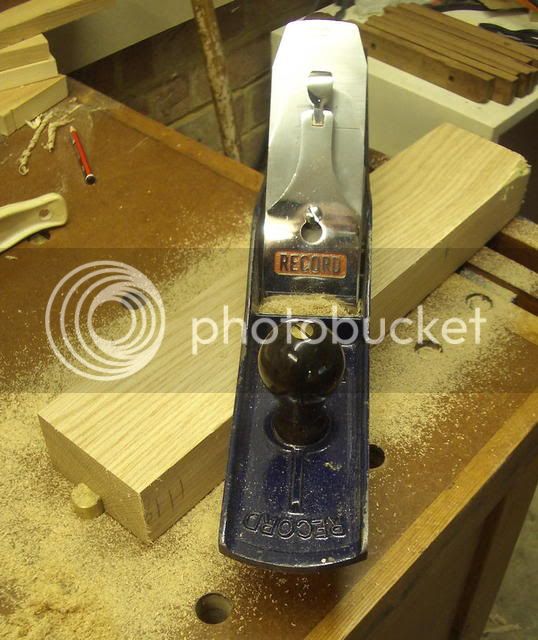
The results are superb. Good stock removal and absolutely no tear-out 8)
The type of shavings you get are long and stringy - as you would expect from the toothed blade
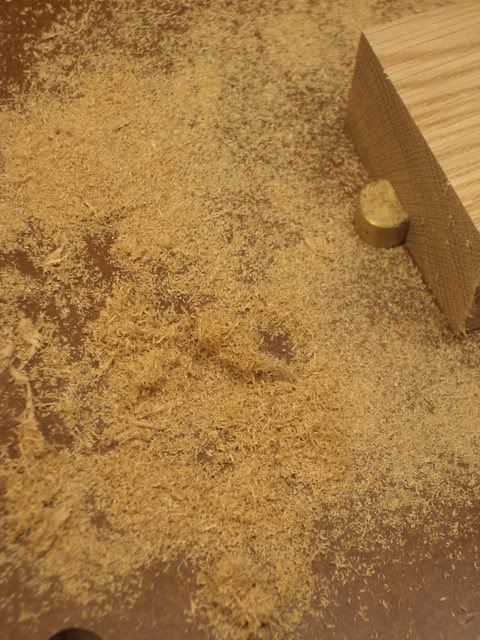
The blade leaves a cross-hatched pattern on the wood which is then easily removed with the jointer plane with conventionally honed blade.
The whole point of these blades is that if, like me, you have no machinery and do all your stock preparation by hand, the normal method of reducing the wood to a presentable state is to use a heavily cambered blade. However, this can cause serious tear-out. It's better to use the heavily cambered blade to knock off the really high spots, then move on to the toothed blade which will give slightly less deep cuts but a tear-free finish, then move on to a conventional blade to finish.
The bottom line is that I'm delighted with the blade and envisage using it a lot.
I ordered one for Karl as well - be interesting to see what he thinks of it :-k
Cheers :wink:
Paul
However, by chance I found that bevel-down toothed blades are available \
I ordered one on Saturday and it arrived yesterday. Here it is

It seems quite nicely made. One slight problem with bevel down toothed blades is that shavings can get trapped between the blade and the cap iron but I found that this can be easily overcome by setting the cap iron a long way back from the edge (you might need to move the frog back a bit in order to be able to withdraw the blade sufficiently when adjusting the blade). I found it works OK like this

When doing rough work like this the cap iron serves no purpose other than to enable the blade to be adjusted, so the planing will not suffer.
I bought the blade to use primarily in my old Record #07 which I use for a lot of stock preparation - usually with a heavily cambered blade. It fits nicely in the plane

I tried the blade on a piece of rough oak which was very subject to tear-out. I found the blade works best used at 45 degrees across the grain

The results are superb. Good stock removal and absolutely no tear-out 8)
The type of shavings you get are long and stringy - as you would expect from the toothed blade

The blade leaves a cross-hatched pattern on the wood which is then easily removed with the jointer plane with conventionally honed blade.
The whole point of these blades is that if, like me, you have no machinery and do all your stock preparation by hand, the normal method of reducing the wood to a presentable state is to use a heavily cambered blade. However, this can cause serious tear-out. It's better to use the heavily cambered blade to knock off the really high spots, then move on to the toothed blade which will give slightly less deep cuts but a tear-free finish, then move on to a conventional blade to finish.
The bottom line is that I'm delighted with the blade and envisage using it a lot.
I ordered one for Karl as well - be interesting to see what he thinks of it :-k
Cheers :wink:
Paul




